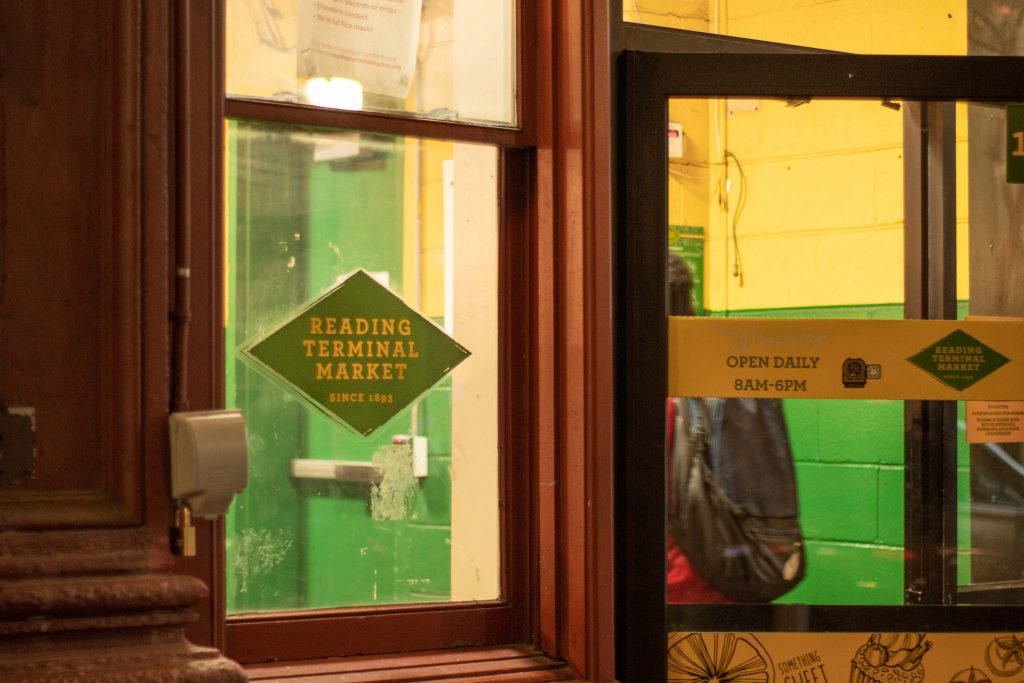
Founded in 1893, Reading Terminal Market houses over 500 vendors who offer their wide range of unique food choices to the market’s customers.
According to Annie Allman, CEO and general manager of Reading Terminal Market, the clientele of the market consists of “about 2/3 local and regional and maybe 1/3 conventions and tourists.”
The market’s merchants are a mix of multi-ethnic and local-born small business owners.
“For many of them it’s a generational opportunity. We have merchants that started in the market at the same time the market did,” says Allman.
Some came from other countries: “Komal’s Middle Eastern, they’re a Syrian-family doing all Middle Eastern grub” and “Olympia’s Gyro which is mostly Greek and [like Komal’s] second-generation,” says Layla El-Tannir, director of business development at Reading Terminal Market.
Others decided to use the market as their opportunity for growing their eatery.
According to El-Tannir, some long-standing businesses include “Sweet T’s Bakery, which is believed one of the first Black owned stores in the market” and “Bassets Ice Cream [who was] an original merchant of the market and they’re still owned by the same family for six generations.”
Only the best and most delectable merchants can obtain a lease in the market, as getting one is a lengthy process.
According to Allman, “There’s an online 3–4-page application that asks you to describe your business or the vision of your business to tell us a little bit about you, your expertise, what size you are looking for, and what equipment you will need, and then Layla and I will work with the potential merchant to flush that out and bring it to a leasing committee [for approval].”
Aside from all the merchants inside the market, several purveyors promote food accessibility.
“The heart of the market is the purveyors and this is where most people who visit for the first time don’t see the value of having these purveyors in the market, but we are one of largest places for customers with EBT in the state of Pennsylvania, so having butchers, produce, dairy in this quality and quantity is extremely important,” says El-Tamir.
Behind all this goodwill is the market staff’s dedication to its core values.
“We are small business focused, no franchises, really focused on that owner-operator relationship where a customer can establish a relationship with the shopkeeper or proprietor and their staff,” says Allman.
Despite being one of the oldest places in Philadelphia, the market keeps itself up to date with modern practices.
“It wasn’t too many years ago that a lot of the businesses were still cash-based and so we really leaned into Mercato, the online platform we use for grocery ordering and delivery, we’re very active on social media as one of our major marketing channels,” added Allman. “We’ve got some pretty cutting-edge store traffic management counters so we can have a better sense of our traffic patterns and make sure we’re actively counting our foot traffic.”
Even during the pandemic, the market persisted in providing food options despite the lack of foot traffic.
According to Allman, “It was pretty devastating early on for the prepared food merchants, conversely the purveyors, on a business level did pretty well as we were allowed to stay open, we’re designated in an essential business and in a weird way almost established those emotional bonds with Philadelphians as we were here for Philadelphia during the worst of it, it was very tough on the merchants but we came out of it.”
What makes it special, is that “it’s a truly diverse authentic public space, where really everyone feels like they come in and they belong and they’re so few of those environments left, is what really makes it special,” says Allman.


